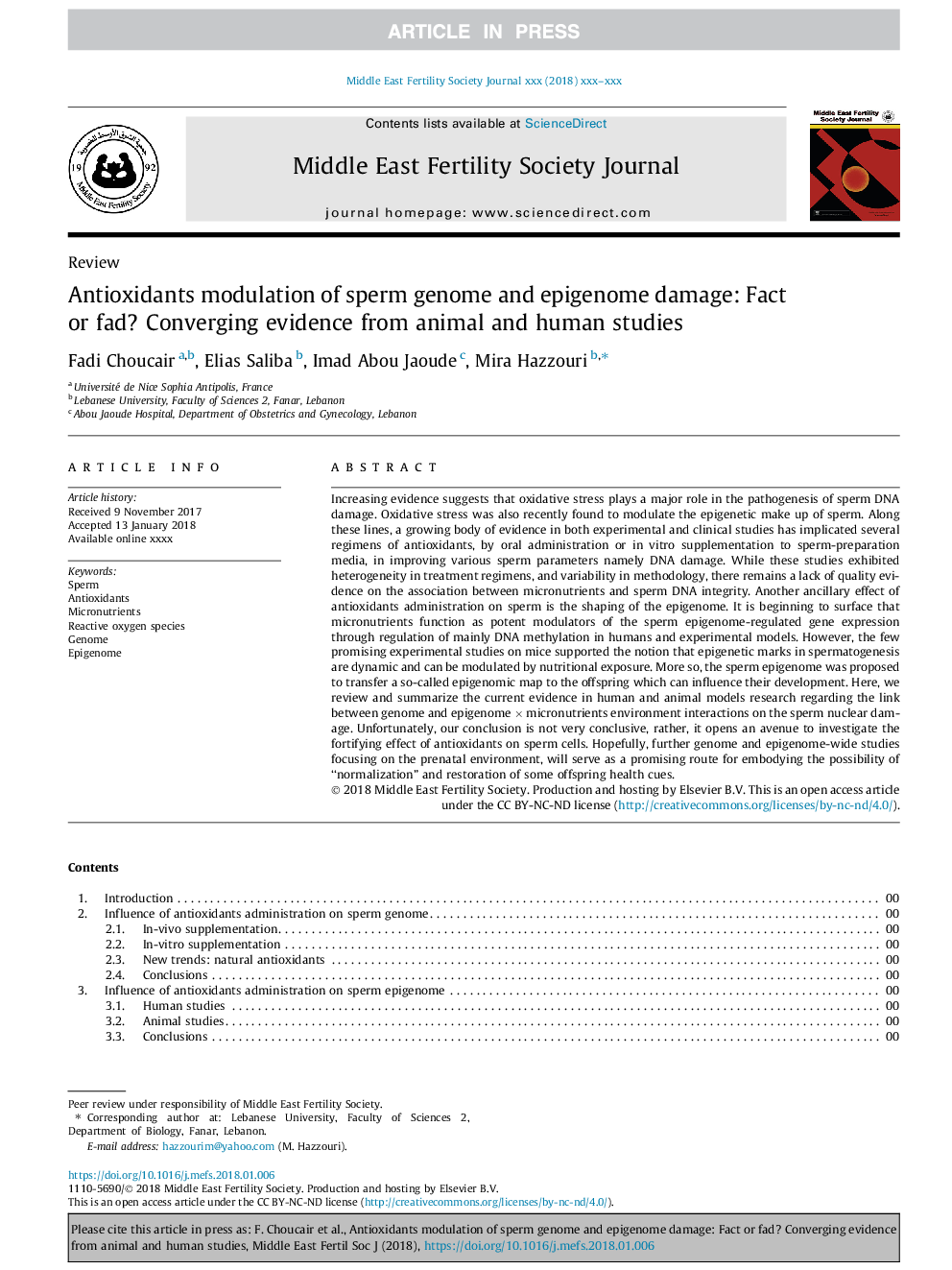| Article ID | Journal | Published Year | Pages | File Type |
|---|---|---|---|---|
| 8783175 | Middle East Fertility Society Journal | 2018 | 6 Pages |
Abstract
Increasing evidence suggests that oxidative stress plays a major role in the pathogenesis of sperm DNA damage. Oxidative stress was also recently found to modulate the epigenetic make up of sperm. Along these lines, a growing body of evidence in both experimental and clinical studies has implicated several regimens of antioxidants, by oral administration or in vitro supplementation to sperm-preparation media, in improving various sperm parameters namely DNA damage. While these studies exhibited heterogeneity in treatment regimens, and variability in methodology, there remains a lack of quality evidence on the association between micronutrients and sperm DNA integrity. Another ancillary effect of antioxidants administration on sperm is the shaping of the epigenome. It is beginning to surface that micronutrients function as potent modulators of the sperm epigenome-regulated gene expression through regulation of mainly DNA methylation in humans and experimental models. However, the few promising experimental studies on mice supported the notion that epigenetic marks in spermatogenesis are dynamic and can be modulated by nutritional exposure. More so, the sperm epigenome was proposed to transfer a so-called epigenomic map to the offspring which can influence their development. Here, we review and summarize the current evidence in human and animal models research regarding the link between genome and epigenomeâ¯Ãâ¯micronutrients environment interactions on the sperm nuclear damage. Unfortunately, our conclusion is not very conclusive, rather, it opens an avenue to investigate the fortifying effect of antioxidants on sperm cells. Hopefully, further genome and epigenome-wide studies focusing on the prenatal environment, will serve as a promising route for embodying the possibility of “normalization” and restoration of some offspring health cues.
Related Topics
Health Sciences
Medicine and Dentistry
Obstetrics, Gynecology and Women's Health
Authors
Fadi Choucair, Elias Saliba, Imad Abou Jaoude, Mira Hazzouri,
